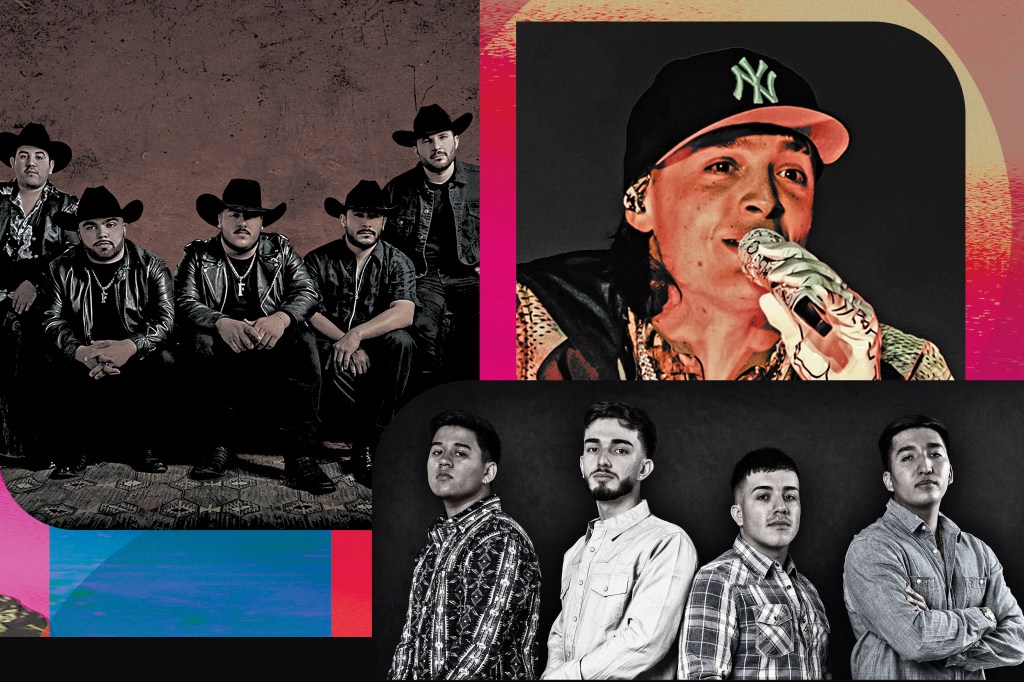What ‘Ella Baila Sola’ Taught Us About The Future Of Latin Music

The sound that dominated popular Spanish-language music in 2023 wasn’t represented at all on the Billboard Hot 100 until two years ago, when Gera MX and Christian Nodal’s country-tinged “Botella Tras Botella” debuted at No. 60 and made history as the first regional Mexican song on the chart. Since then, the genre’s presence on the ranking has exploded as a new crop of stars has evolved the music’s sound and look, borrowing from hip-hop, trap and rap to build on its traditional instruments of guitar, accordion and more. As a result, these artists have nurtured a new generation of fans for a genre with foundations that date back over a century.
This year, more than 35 regional Mexican tracks have entered the Hot 100, highlighted by Eslabon Armado and Peso Pluma’s blockbuster smash, “Ella Baila Sola,” which also made history when it reached the chart’s top five. This record year for regional Mexican music, or música Mexicana, has been powered by not only superstar collaborations — like Grupo Frontera’s team-up with Bad Bunny and Fuerza Regida pairing with Marshmello — but also support from major labels eager to partner with the independents that have long dominated the genre. In the first half of 2023 alone, overall consumption of regional Mexican music jumped 42.1%, topping all other genres but K-pop, according to Luminate.
“For decades, Mexican music has played a significant role in Latin music, leaving a profound impact on the global musical landscape,” says Manny Prado, vp of marketing and A&R at Interscope Records. “Finally, it has gained the acknowledgment it deserves.” This year in particular, international collaborations have propelled the sound into uncharted territories, and no other Latin genre has gained the traction of regional Mexican.
Its newfound popularity is rooted in many things, but particularly in its indie support, followed by multinational distribution partnerships with major labels. In June, Fuerza Regida frontman Jesús Ortiz Paz signed a worldwide deal with Cinq Music to distribute his own label, Street Mob Records, which he launched in 2018. The move followed a deal that Fuerza Regida signed with Sony Music Latin last year through a partnership with its indie label, Rancho Humilde. The strategy also worked for Washington state-based sibling trio Yahritza y Su Esencia, which signed to Columbia Records in partnership with Sony Music Latin and its indie Lumbre Music (which had discovered and signed the act eight months prior).
While indies have historically dominated the genre — and continue to do so — such partnerships indicate that alliances will be key to the music’s continued growth in 2024.
“We saw Mexican music grow because artists started to collaborate, and it’s the same thing when companies start joining forces,” says Maria Inés Sánchez, Sony Music Latin’s new vp of West Coast operations. “Major labels like Sony can reach a broader spectrum of the business in general. We have eyes where indies perhaps don’t with offices internationally.”
At the center of the regional Mexican revolution is Peso Pluma, whose raw and raspy vocals and signature sound of punctuated trombones and charchetas — along with a quirky haircut — made him the unwitting face of the genre. After a few collaborations with fellow corrido artists at the beginning of the year, he struck gold when he teamed with Eslabon Armado for “Ella Baila Sola.” Arguably this year’s biggest Latin hit, with 617.3 million on-demand official streams in the United States, it proves how a powerful song can propel a local genre to global recognition, as well as the importance of catering to a broader audience. The two indie artists are stylistically opposites; Peso Pluma is known for his swaggy, attitude-heavy corridos and Eslabon Armado for its romantic sierreño ballads. “Ella Baila Sola” became the first regional Mexican song to dominate the Billboard Global 200 (holding the top slot for six weeks) and is No. 1 on the year-end Hot Latin Songs chart.
Another head-turning team-up arrived in April, when Bad Bunny joined Tejano act Grupo Frontera for “un x100to,” a cumbia/norteña song that scored a top 10 debut on the Hot 100. It was perhaps a catalyst for other unorthodox collaborations that followed, including Peso Pluma and El Alfa, Grupo Frontera and Manuel Turizo, and Banda MS and Ice Cube.
“The [Mexican] movement is now taking advantage just as reggaetón did” in the early 2000s, says Sergio Lizárraga, founder of indie label Lizos Music and manager of Banda MS. “But in the end, the root is the same, the themes they address are the same — just sung differently.”
Uriel Waizel, the editorial lead for Mexico at Spotify, compares this wave of success to another genre entirely: Afrobeats. “The biggest lesson regional Mexican music has taught is that the ‘traditional’ format had to make concessions to impact the U.S. and global charts,” Waizel says. “Which is what we saw happen with Rema and Selena Gomez [with “Calm Down”]. It’s a great example of music that becomes more digestible for global audiences.”
He cites recent Latin hits like “Qlona” by Karol G and Peso Pluma and “Harley Quinn” by Fuerza Regida and Marshmello as further proof. “After several iterations that have been happening evolutionarily over the past five years,” he says, “música Mexicana has finally found its way into the global market.”
This story originally appeared in the Dec. 9, 2023, issue of Billboard.
Link to the source article – https://www.billboard.com/music/latin/ella-baila-sola-regional-mexican-music-collaborations-analysis-1235547755/
Recommended for you
-
Audient Audio Interface iD4 MKII, Class A Console Microphone Preamp (High Speed USB-C, Monitor Mix and Monitor Panning Function, 2 Headphone Outputs, Mac/PC/iOS Compatible), Black
$192,58 Buy From Amazon -
Laminated Left Handed Mandolin Chord & Fretboard Note Chart Instructional Easy Poster for Beginners Chords & Notes A New Song Music 11″x17″
$10,99 Buy From Amazon -
YIJU B Key Bugle Cavalry Trumpet for Band Children Student Beginner Silver
$39,99 Buy From Amazon -
Alesis Drums Surge Mesh SE Kit – Electric Drum Set with USB MIDI Connectivity, Quiet Mesh Heads, Drum Module, Solid Rack, 40 Kits and 385 Sounds
$599,00 Buy From Amazon -
Alesis Drums Command Mesh SE Kit – Electric Drum Set with Quiet Dual Zone Mesh Pads, USB MIDI Connectivity and 600+ Electronic & Acoustic Drum Sounds
$799,00 Buy From Amazon -
EBXYA MIDI to XLR Adapter Cable 6 Feet – MIDI 5 Pins DIN Male to XLR 3 Pins Male
$11,99 Buy From Amazon -
UA Volt 2 USB Audio Interface for recording, podcasting, and streaming with essential audio software, including $400 in UAD plug-ins
$189,00 Buy From Amazon -
KORG X-5 – THE very Best of – Large Original WAV/Kontakt Samples Library
$14,99 Buy From Amazon













Responses